Map中的compute、computeIfAbsent和computeIfPresent的使用和区别
先准备一个简单的map数据吧
Map<Long, String> testMap = new HashMap<>();
testMap.put(1L, "张三");
testMap.put(2L, "李四");
testMap.put(3L, "王五");
computeIfAbsent
简单来说这个方法就是根据第一个参数key,去查询map,只有当返回值为null即Map中查询不到对应的数据时,向Map中添加一条数据
//测试,没有新增
testMap.computeIfAbsent(4L, aLong -> "computeIfAbsent");
//有返回值,不做任何操作
testMap.computeIfAbsent(3L, aLong -> "computeIfAbsent2");
操作之前的截图

没有的新增

有的不做操作
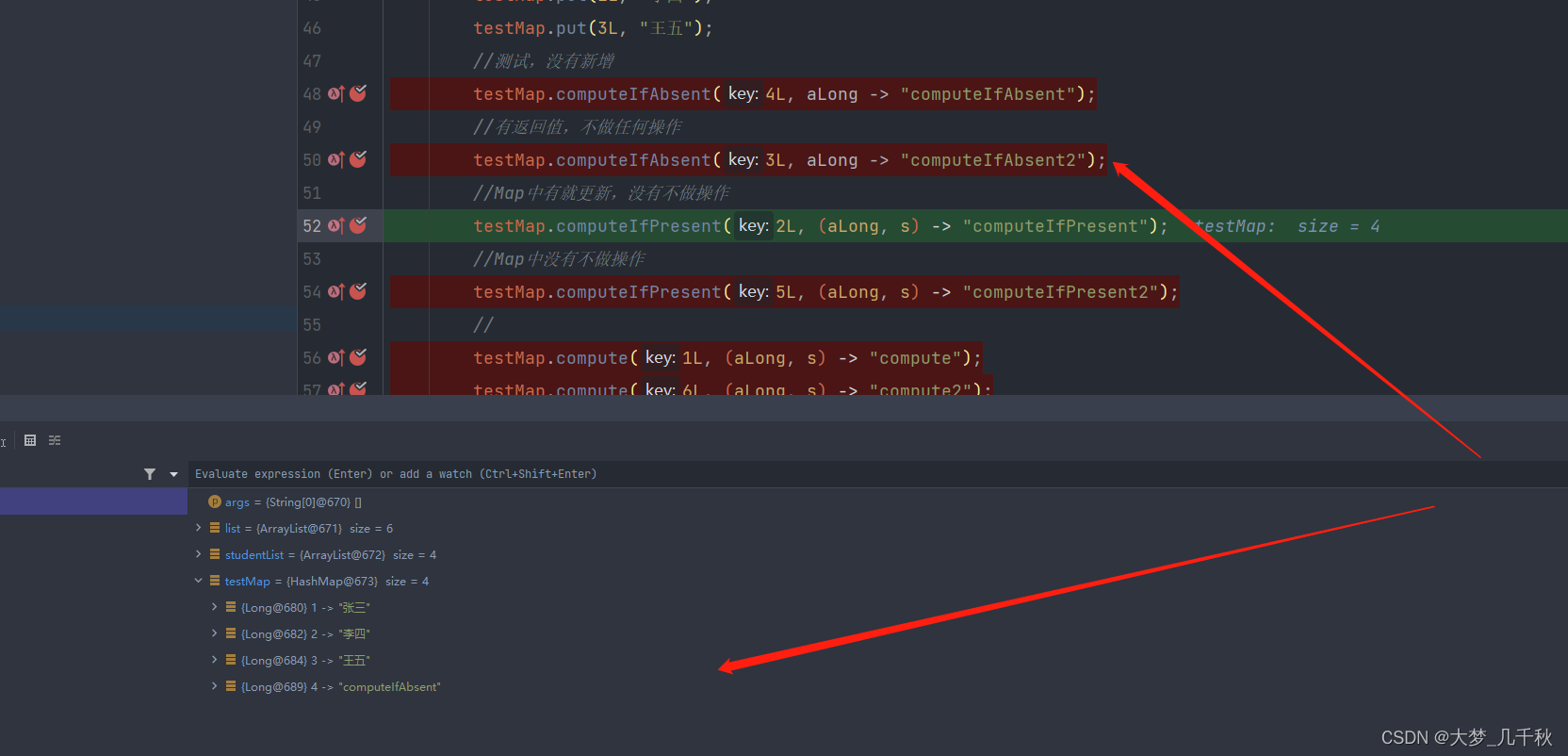
computeIfPresent
简单来说这个方法就是根据第一个参数key,去查询map,如果查询到了就更新对应的值,如果查询不到,不做任何操作
//Map中有就更新,没有不做操作
testMap.computeIfPresent(2L, (aLong, s) -> "computeIfPresent");
//Map中没有不做操作
testMap.computeIfPresent(5L, (aLong, s) -> "computeIfPresent2");
有就更新
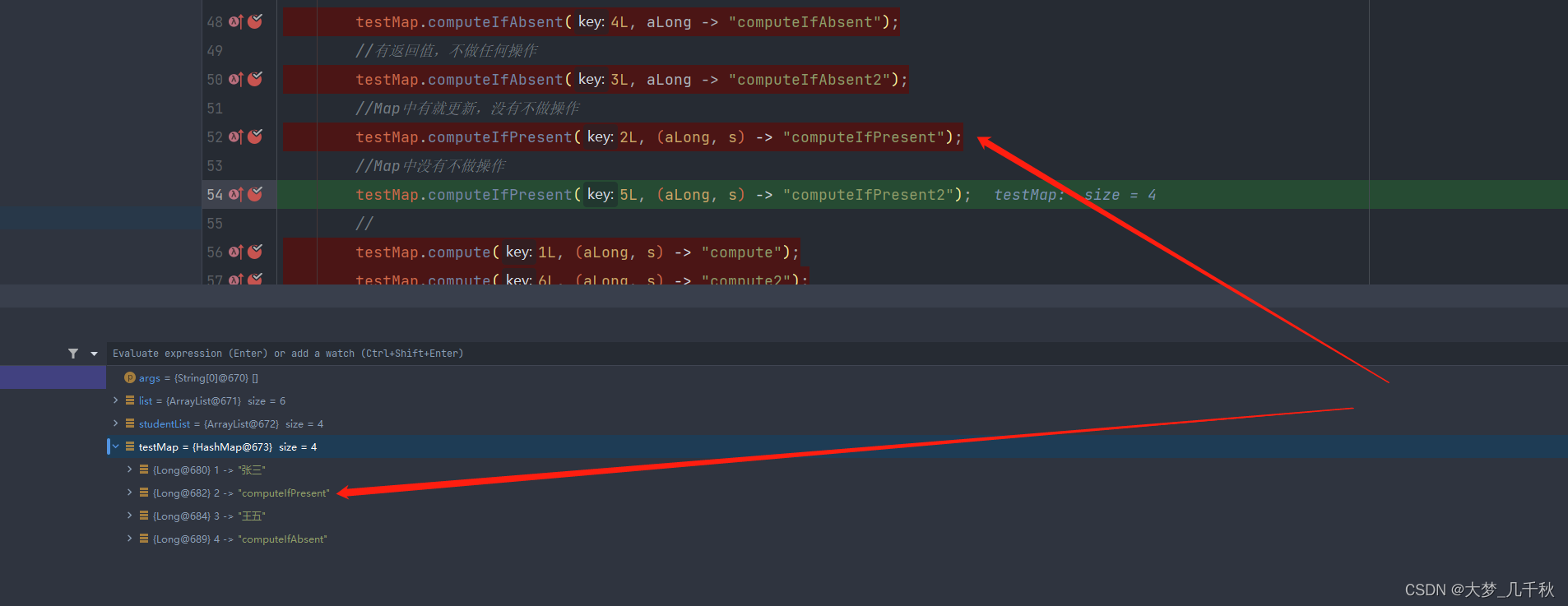
没有不做操作
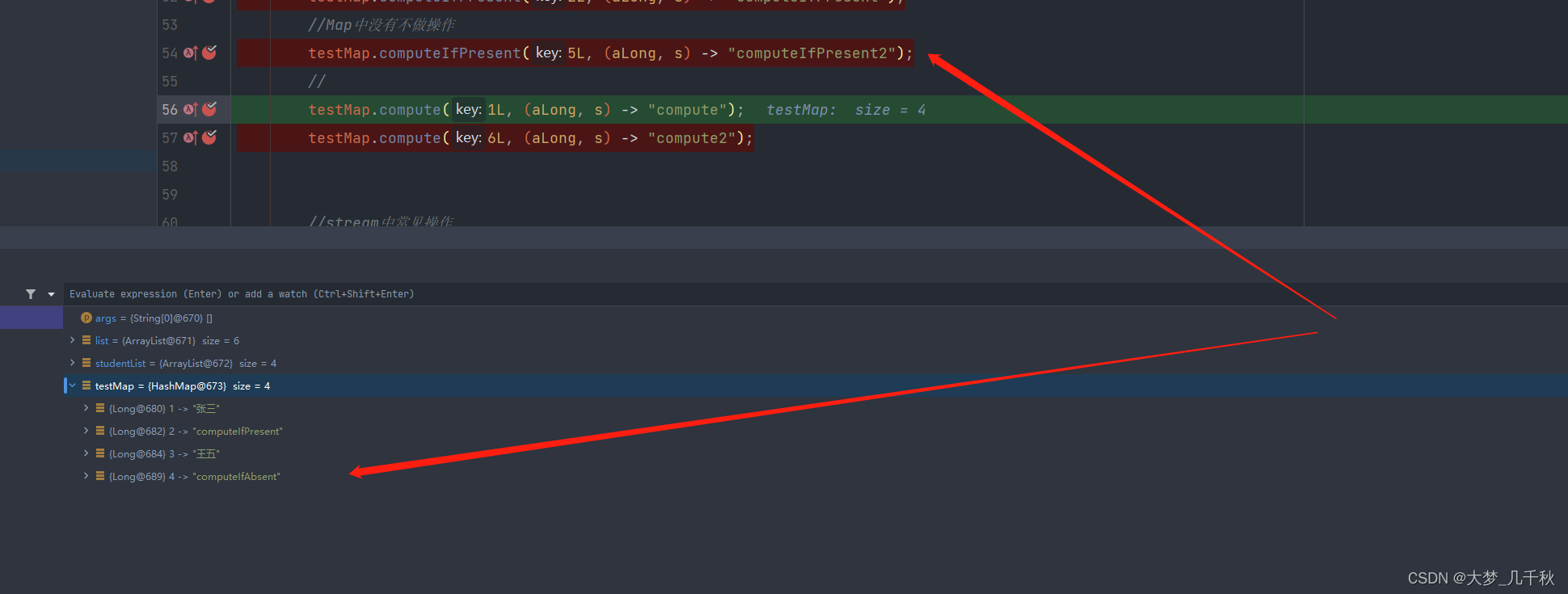
compute
简单来说这个方法就是根据第一个参数key,去查询map,无论是否查询到,都会执行第二个方法体,没有就新增,有就更新值
testMap.compute(1L, (aLong, s) -> "compute");
testMap.compute(6L, (aLong, s) -> "compute2");
有就更新
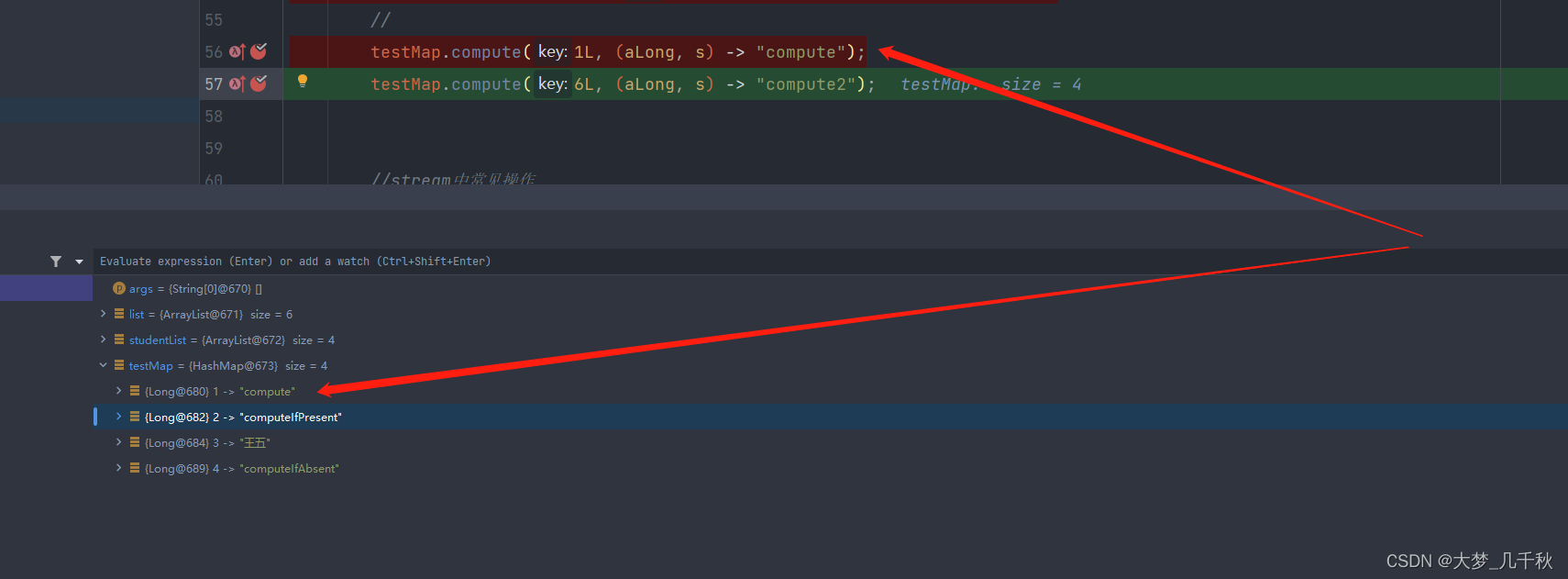
没有就新增
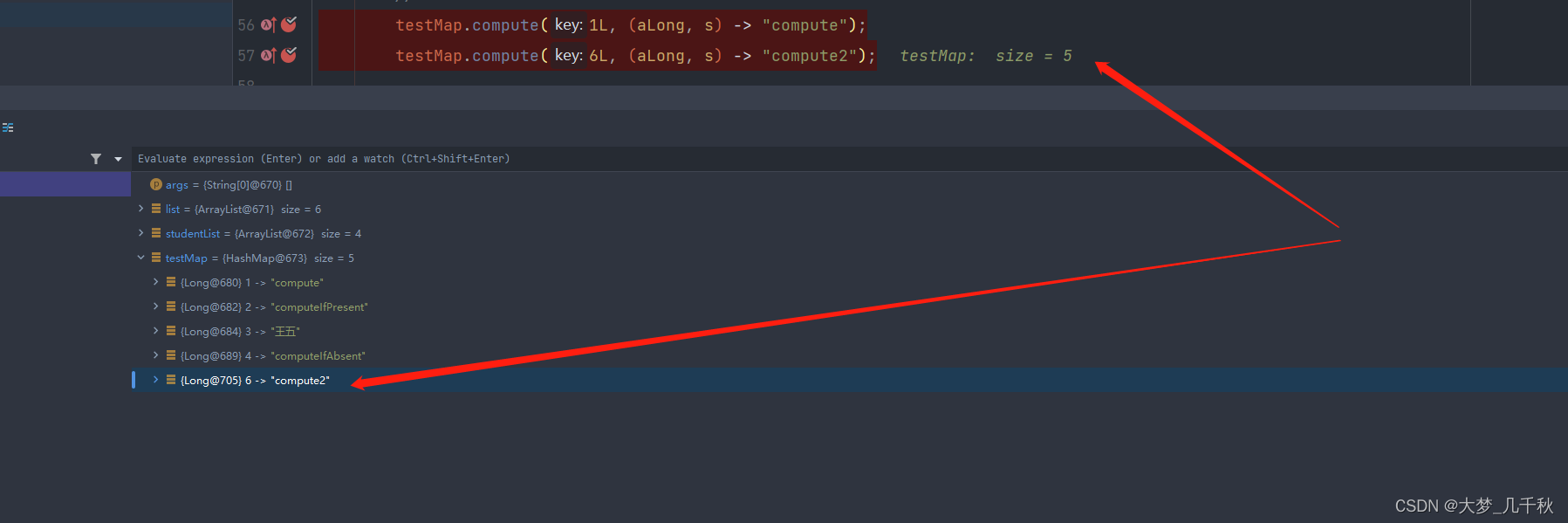
完整代码
Map<Long, String> testMap = new HashMap<>();
testMap.put(1L, "张三");
testMap.put(2L, "李四");
testMap.put(3L, "王五");
//测试,没有新增
testMap.computeIfAbsent(4L, aLong -> "computeIfAbsent");
//有返回值,不做任何操作
testMap.computeIfAbsent(3L, aLong -> "computeIfAbsent2");
//Map中有就更新,没有不做操作
testMap.computeIfPresent(2L, (aLong, s) -> "computeIfPresent");
//Map中没有不做操作
testMap.computeIfPresent(5L, (aLong, s) -> "computeIfPresent2");
//有就更新
testMap.compute(1L, (aLong, s) -> "compute");
//没有就新增
testMap.compute(6L, (aLong, s) -> "compute2");





















 733
733











 被折叠的 条评论
为什么被折叠?
被折叠的 条评论
为什么被折叠?








